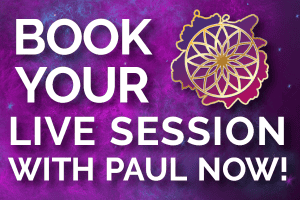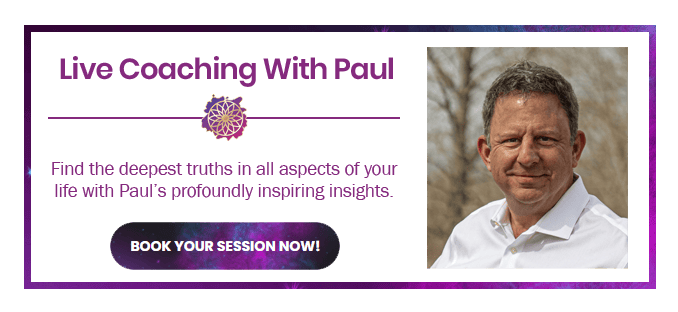
Forensic forgiveness can open up a cavern of light and potential within us, and produce powerful, miraculous effects. Forgiveness might not always involve loving our offenders, but it can include loving ourselves.
“Forge” is part of the words “forget” and “forgive.” Forge means to build, create, or clear. We have to create and clear paths to forget and we have to create and clear paths to forgive. The difference is that if we solely forget, we miss out on the lesson, and if we forgive, we absorb the lesson and embody a deeper clarity.
The word “forge” also suggests, “to birth using fire.” Forensic forgiveness is full of fire. It’s about releasing (burning) the old and being reborn (rebirth).
.
“It’s one of the greatest gifts you can give yourself, to forgive.
Forgive everybody.”
~ Maya Angelou
.
We might be unaware of our needs or desires to forgive others.
We might be deeply entrenched in emotions, habits, and activities that forsake our purity. It’s our hope for purity that inspires forensic forgiveness; it’s our vulnerability that invites the divine to help us transform.
We might be so addicted to the stench of our habits, depressions, regrets, and their related resentments that we’ve become unwilling or unable to choose clean air. It’s easy to forget that rebirth is our birthright.
Upon a painful experience, a secret part of us might want to relish or preserve it. Our minds might add soundbites and images to our recollection of the event, which, in turn, transforms it into an indelible stew.
What then? If a part of us loves or builds-upon a negative event, how do we move through it or past it? It begs the ancient question, how do we forgive?
.
“Enlightenment means the ability to recognize oneself in all living creatures.”
~ Amma (Sri Mata Amritanandamayi Devi, Amma.org)
.
The Process of Forensic Forgiveness
For some people, forensic forgiveness of even the most traumatic happens during a gentle walk by a quiet stream. After a sweet recollection of the good and the challenging, and the release of a few tears, it’s done. Forgiveness is miraculous when it happens this way.
Depending upon the relationship or event, forgiveness can also be extremely difficult, and the process can take what seems like centuries. As long as we don’t squash every impulse to forgive, our desires for resolute clarity will eventually saunter to the surface and humbly request our attention. GO FORGIVENESS GO!
If forensic forgiveness is difficult for you, consider picturing yourself as having required some aspects of the traumas or relationships you experienced for your growth, evolution, or healing. It’s in this way that you might be able to assume a measure of power over your past. It might then be possible to heal in the present and allow an unburdened future to unfold.
Let’s recap. Forensic forgiveness can be a b*tch, but you can do it!
To begin, write in your journal. I use my journal as a living, editable relationship with the Divine. Whatever I write, I assume that the Divine is helping me to process it, extract its highest value, and turn it into light.
As you write about the events and people in your journal, consider every interaction to be a lesson about who you are. Don’t obsess over the actions of others. We have no control over these things.
Refrain from seeing yourself as a victim. Let the tears and feelings flow without reservation. When it comes to forgiveness, judgment and fear are pointless.
For this exercise, write solely about the characteristics of your challenging experiences, and refrain from meticulously documenting the details. Explore solely the attributes.
If someone added anger into the mix, add anger to your “list of attributes.” If the event involved betrayal, lying, contrivance, deceit, or physical pain, add those to the list. If this same person or event also brought grace and love into your life, add those to your list.
As the list grows, you’ll see the characteristics, emotions, and aspects at play. These are things that emerged around YOU. These things are part of YOUR narrative. YOU are the centerpiece. It’s not about other people, it’s about YOU.
Click to read “Amma: The Loving, Hugging, Humanitarian Saint”
As you compile the list, continue to write in your journal. Gently describe all the images, phrases, and associations related to the traumatic events that you wish to integrate and heal. Look at every trajectory, related person, and imagined picture that appears to be connected to the events that you are processing.
After you’ve exhausted your written exploration, process how you feel about each image, phrase, and soundbite. Try to encourage your feelings to move. As you process and release emotions, feel the clearing in your heart.
Cry, pound the earth in anger, and pray. The more complex the collage, the deeper the lessons. Be thorough. While it’s wonderful when this process is completed within a short period, allow forgiveness to take some time.
.
Let go and forgive all aspects, all the stories, and every image.
Remember to forgive yourself along the way.
.
What is Emotional Forgiveness and Healing?
Emotional forgiveness is the process by which you express your emotions to achieve forgiveness, and therefore achieve a healing. This is not the only pathway to forgiveness and healing, but it’s the predominant one.
As you look deeper into the attributes of the people and events in your life, you might see that you have hurt people in similar ways to how you have been hurt. It might be that the traumas you’ve experienced are nothing more than divine modalities helping you to resolve prior actions and to become a better person.
By feeling and expressing our emotions, we achieve tidbits of wisdom. With emotions comes wisdom.
Rituals of Forgiveness & Letting Go
Rituals help us physicalize our beliefs and desires, helping them come into our physical realities.
My favorite ritual is The Seven Arrows ritual, most reliably found within the Native American tradition. The ritual involves making a list of the things that you seek to release from your life (Death Arrows), along with a list of the things and attributes you wish to welcome into your life (Life Arrows).
During the ritual, you decorate arrows for each item on the list, and then do separate rituals for the Life Arrows and the Death Arrows. It’s all about letting go and making room for goodness and transformation in your life.
The Changing The Book of Life Ritual is an equally powerful ritual. In this ritual, you make a list of the events, people, and experiences that you wish to remove from your life. Ask that the universe return any gifts, talents, and attributes that you were given during each of these experiences and relationships. Pray that the people related to these events are nurtured and healed by the divine, and do not experience any loss.
For each event, experience, and relationship you wish to cleanse, ask that all the gifts, talents, and attributes that you relinquished during each exchange be returned to you. Throughout the process, allow emotions to rise and dissipate. This is how the soul achieves cleansing and clearing.
Love, forgiveness, emotional-release, and healing based rituals have the power to remove negativity, enlighten our paths, and create lasting healing and change.
If you’d like a copy of these rituals, email me at paul@paulwagner.com.
“Discrimination is meant for one who is in the process of evolution. You need strict discrimination to understand the difference between what is good for your spiritual progress and what will create obstacles in your path. A seeker must discriminate between what is eternal and what is non-eternal. But once you have attained the state of perfection, you have renounced everything, even discrimination. You cannot hold onto anything. Transcending all dualities, you become the universe; you become expansiveness itself. You become both day and night. You go beyond purity and impurity.” ~ Amma (Sri Mata Amritanandamayi Devi, Amma.org)
When We Let Go, We Create Space
While society often teaches us otherwise, our attachments aren’t treasures. Even our habits around family and friendships can be hindrances. Seeing ourselves clearly often requires changing habits, relationships, environments, and releasing the things that inhibit or restrict our clarity and freedom.
By diving deep into the elements, associations, and related mental conjurings of our most challenging experiences, we exponentially expand our understanding of ourselves and reality.
We deepen and expand. By doing so, we create internal engines that allow us to process life’s events with greater ease.
With release comes a vacuum, which the universe will seek to fill with reflections that are in line with your renewed self. While this process is an act of self-love, it is also a prayer of hope for your offenders.
Forgiveness helps us release the emotions and imagery that restrict us. From there, we grow discrimination. Everybody wins, especially you.





